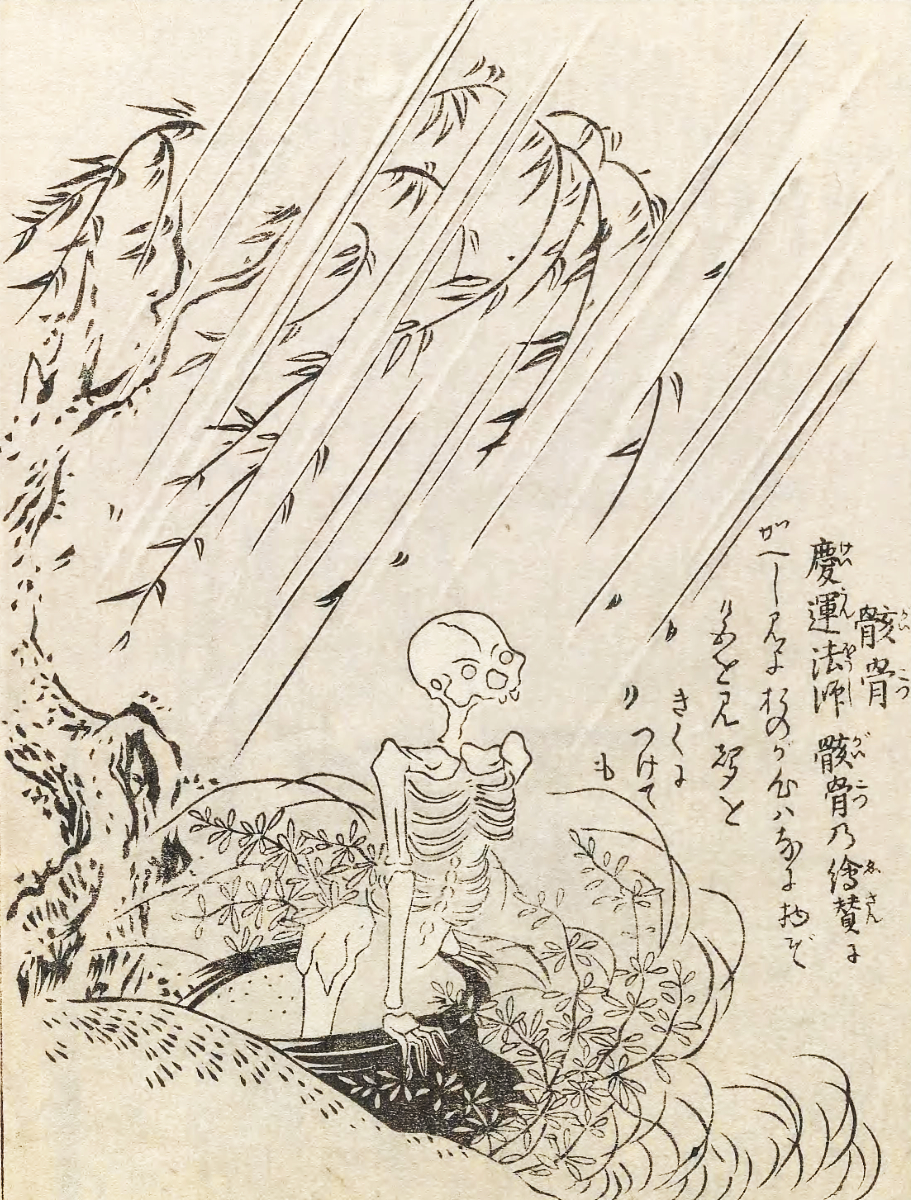Soldiers whose bodies rot in the fields and victims of famine who die unknown in the wilderness rarely receive proper funerary rites. Unable to pass on, their souls are reborn as ghosts, longing eternally for that which they once had. These people die with anger and pain in their hearts. That energy remains long after their flesh has rotted from their bones. As their bodies decay, their anger ferments into a grudge against the living, which twists them into a supernatural force.
| Alias Gaikotsu (骸骨) |
| Real Names/Alt Names “Skeleton” |
| Characteristics Skeletal, Yōkai, Enlightenment and Neoclassicism, Japanese |
| Creators/Key Contributors Toriyama Sekien, ○ |
| First Appearance Japanese folklore |
| First Publisher ○ |
| Appearance List Konjaku Gazu Zoku Hyakki (今昔画図続百鬼, “The Illustrated One Hundred Demons from the Present and the Past”, 1779) Vol. 3 |
| Sample Read Konjaku Gazu Zoku Hyakki Vol. 3 “Dawn” (1779) [Smithsonian] |
| Description Soldiers whose bodies rot in the fields and victims of famine who die unknown in the wilderness rarely receive proper funerary rites. Unable to pass on, their souls are reborn as ghosts, longing eternally for that which they once had. These people die with anger and pain in their hearts. That energy remains long after their flesh has rotted from their bones. As their bodies decay, their anger ferments into a grudge against the living, which twists them into a supernatural force. |
| Source Gashadokuro – Yokai.com |

